Six Mysteries. Six Authors Read.
Meet six cool Canadian authors and hear about their new releases, replenish your TBR pile, be entertained!
Recently Sisters in Crime -Canada West showcased six authors and their new releases.
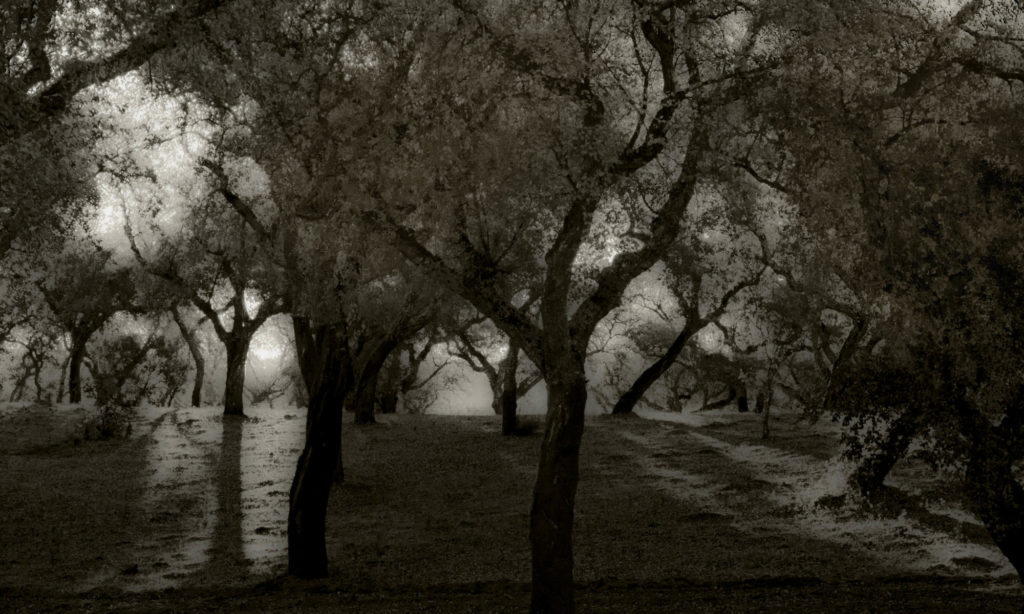
To view, click HERE.
Meet six cool Canadian authors and hear about their new releases, replenish your TBR pile, be entertained!
Recently Sisters in Crime -Canada West showcased six authors and their new releases.

To view, click HERE.
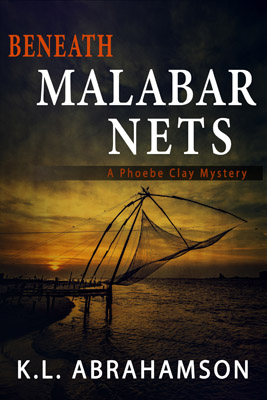
Check out the Podcast HERE.
My short story, ‘Chicken Coops and Bread Pudding’ is now available in Moonlight and Misadventure.
Whether it’s vintage Hollywood, the Florida everglades, the Atlantic City boardwalk, or a farmhouse in Western Canada, the twenty authors represented in this collection of mystery and suspense interpret the overarching theme of “moonlight and misadventure” in their own inimitable style where only one thing is assured: Waxing, waning, gibbous, or full, the moon is always there, illuminating things better left in the dark.
Featuring stories by K.L. Abrahamson, Sharon Hart Addy, C.W. Blackwell, Clark Boyd, M.H. Callway, Michael A. Clark, Susan Daly, Buzz Dixon, Jeanne DuBois, Elizabeth Elwood, Tracy Falenwolfe, Kate Fellowes, John M. Floyd, Billy Houston, Bethany Maines, Judy Penz Sheluk, KM Rockwood, Joseph S. Walker, Robert Weibezahl, and Susan Jane Wright.
Available on:
 I’m thrilled to be one of the authors included in the anthology, Moonlight and Misadventure, from Superior Shores Press. My story is called Chicken Coops and Bread Pudding. The anthology will be released June 18th 2021, but is available for preorder now.
I’m thrilled to be one of the authors included in the anthology, Moonlight and Misadventure, from Superior Shores Press. My story is called Chicken Coops and Bread Pudding. The anthology will be released June 18th 2021, but is available for preorder now.
Whether it’s vintage Hollywood, the Florida everglades, the Atlantic City boardwalk, or a farmhouse in Western Canada, the twenty authors represented in this collection of mystery and suspense interpret the overarching theme of “moonlight and misadventure” in their own inimitable style where only one thing is assured: Waxing, waning, gibbous, or full, the moon is always there, illuminating things better left in the dark.
I hope you enjoy the wonderful stories!
Available at:
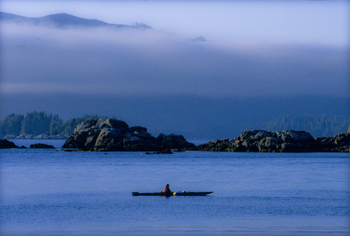
I had the great good fortune to be interviewed by Joanna Vandervlugt of JVC Art Studio about writing, travel, and Through Dark Water: A Phoebe Clay mystery. What a lovely way to spend a Sunday morning. I hope you enjoy it!
https://anchor.fm/jcvartstudio/episodes/K-L–Abrahamson—Through-Dark-Water-evpaqq

Sometimes… sometimes this world can be so darned hard to be in—like reading about the death of the last male northern white rhino, or that 18 of the Tigers ‘rescued’ from a Thai temple ended up dying. And then there’s the whole darn political situation where nobody seems to speak the whole truth.
But other times the world can be such a giving place that it overwhelms. That was my experience in Bhutan.
As I mentioned in a prior post, Bhutan is a Buddhist country. It isn’t a big country. It isn’t particularly modern in the way places like London, New York, or even Bangkok might be, but it’s a country that seems to understand the concept of ‘enough’. It might not be a wealthy country (up until this year it’s biggest source of revenue was tourism), but the government has decided not to rate the well-being of the country not on gross domestic product (in other words, how much does the country produce or earn each year), but instead they assess the country on Gross Domestic Happiness.
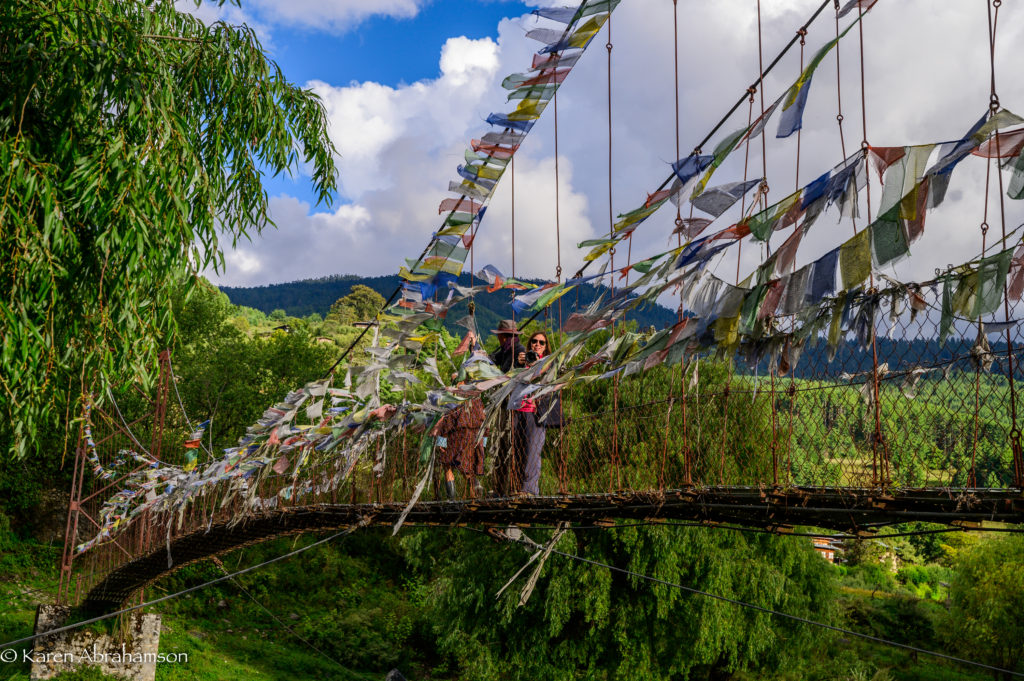
I’m not quite sure how they measure this apparently quite ‘ephemeral’ concept, but I have to say that the country seems to be doing quite well. Some of it seems to be the personal realizations of the citizens that they can have ‘enough’—maybe not from driving for the ‘high life’, but from something else. For instance, the country has put a lot of energy into education and has a well-educated middle class. This has lead to many young people leaving their traditional country villages for the city leading to pressure on Thimpu and Paro (the two main cities) and some concern for the farming tradition of the country. What did the country do? It offered sizeable subsidies for the well-educated young people to return to farming—and its working!
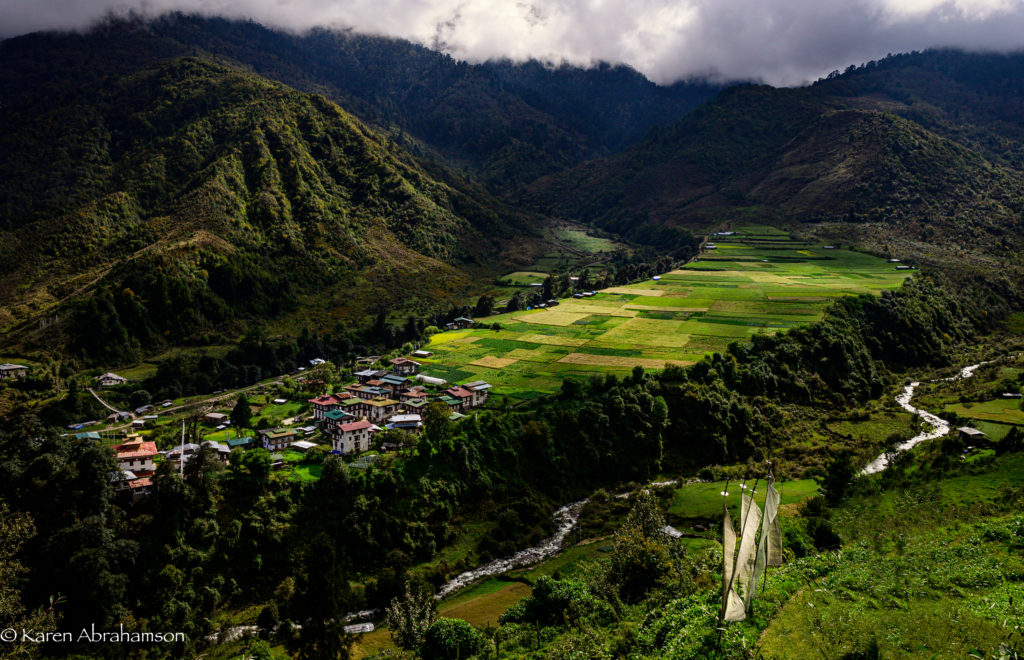
Bhutan is also a country that is trying hard to balance growth with protection of the environment. Compared to most countries around the world, Bhutan has actually seen an increase in the its national forest cover and it does things like set aside an entire fertile valley floor in order to preserve the habitat of the rare black-necked crane. Pretty progressive.
At the same time, tradition is everywhere. Come to a bridge, a river confluence, or mountain pass, and you find yourself amongst the fluttering host of red, yellow, green, blue or white prayer flags. Tradition says that with every gust of wind, the prayers connected to the flags are sent skyward to the benefit of the prayer flag’s patron. You become a patron by deciding to put up the flags but you’ll also see clusters of white prayer flags on poles that are raised in remembrance of the newly dead.
While I was in Thimpu, the capital, I had the chance to visit a Bhutanese astrologer who informed me that:
Given the astrologer was exactly right about the couple of bad years, I took the prayer flags he recommended and thought that I would hang some in Bhutan and some when I returned home. My kind and oh-so-knowledgeable guide, Kuenzang Norbu, researched dates that were bad to hang flags, and our wonderful driver, Tenzin Norbu (no relation) actually asked his father to research my best and worst days of the week.
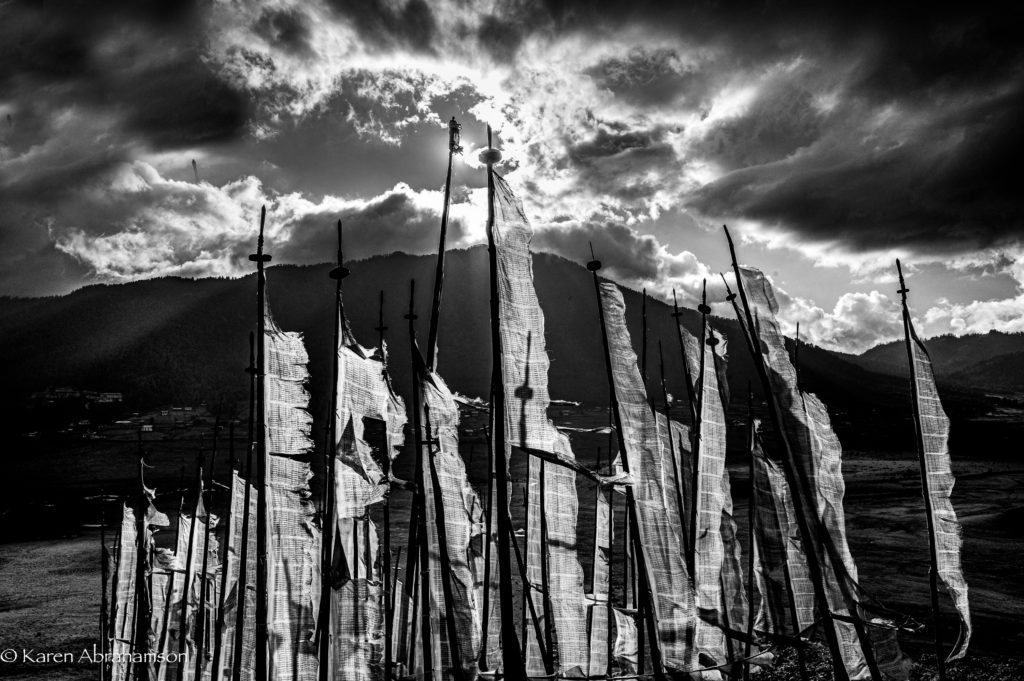
Not long afterward, we were traveling over one of Bhutan’s many high passes where the wind rarely ceases. The peaks of the pass were a mass of poles bearing crowds of fluttering flags and I knew immediately that this was where I had to hang my flags. Wonderful Tenzin helped me sort through them and then our entire group climbed the hill with me and helped hang my flags.
Whether it was for my benefit or whether it was because we all received the benefit of hanging those flags in the wind, the giving nature of everyone involved (foreign photographers and Bhutanese hosts alike) left me quite astounded.
So, I stood in amongst all those windswept prayers and cried.
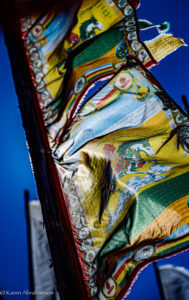
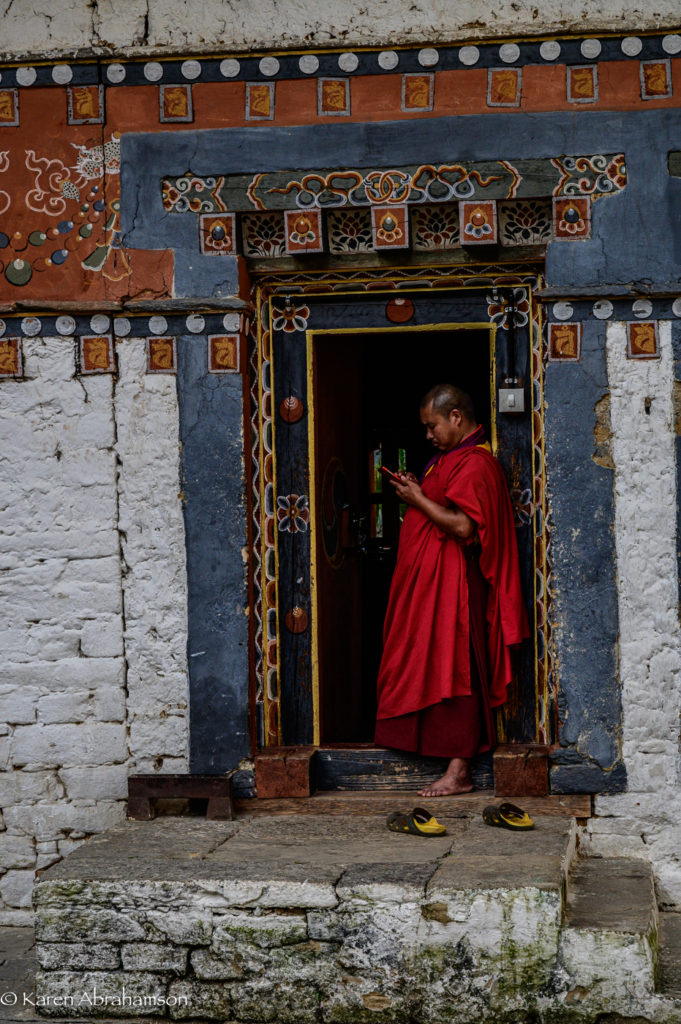
One of the images I will always remember of Bhutan is of the tall white walls and ornate carved lintels of the many monasteries and nunneries that dot Bhutan’s landscape. It seemed that beyond the mighty Dzong fortresses (that usually included a monastery), Bhutan’s landscape was littered with the gleaming roofs and walls of temples, monasteries and nunneries. Okay, that impression may have been added to by the prevalence of stupa and chorten (stone Buddhist monument, often containing religious relics) as well as smaller, white stone/clay structures found at homes, temples, monasteries etc. where people burn cypress or pine branches to purify the air. But within these glittering walls awaited the true jewels—the people.
On a personal level I can only imagine how invasive it must be to have camera-laden foreigners invading your place of quiet contemplation and snapping away. It must be even more so, when EVERYONE wants an image of a red-robed monk against a white wall. I can’t blame some of the monks for literally waving tourists away—heck, I’d most likely be doing a lot more to protect my privacy—but that wasn’t my experience with the monks and nuns of Bhutan.
Our first visit to a monastery was at Jakar Dzong. We arrived late in the afternoon after most tourists had come and gone. Not surprisingly, late in the afternoon was also when the monks ventured out, but I was surprised at how welcoming they were. Young monks posed for us, and one of the senior monks (he happened to be an adopted relation of our guide) invited us into his chambers to share a glass of arra, a powerful liquor distilled from rice, and some puffed rice. With all of us (seven photographers and two guides) crowded into his room and seated on the floor, our host proceeded to spend over an hour with us answering questions about Buddhism and monastic life.

That alone, was a gift, but he also invited us to an early morning ceremony at the temple so we were up and at the temple by 6 am—about 3 hours after the preparations had begun. There we sat at the end of the room while the monks chanted, blew long horns and beat ornate drums, while here and there the poor young monks would doze off for a few minutes before jerking awake again. I cannot convey to you the bone-deep vibration of the chanting and the soft yellow gutter of the butter lamps that illuminated the room.
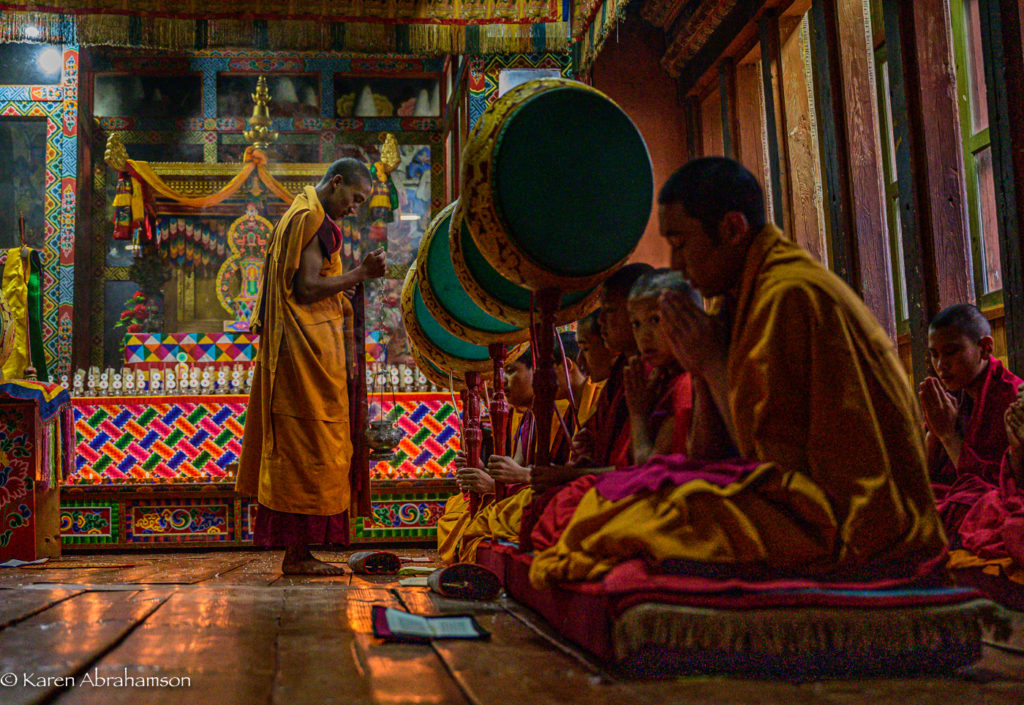
On another occasion we visited a nunnery set on a hilltop a long way off the main roads. When we arrived most of the young nuns were too shy to allow us to photograph them, but with a little cajoling and a lot of laughter we finally broke through. The ‘hit’ of the day was a small polaroid camera that allowed us to take photos for the nuns to keep. It was wonderful and the smiles were beatific.
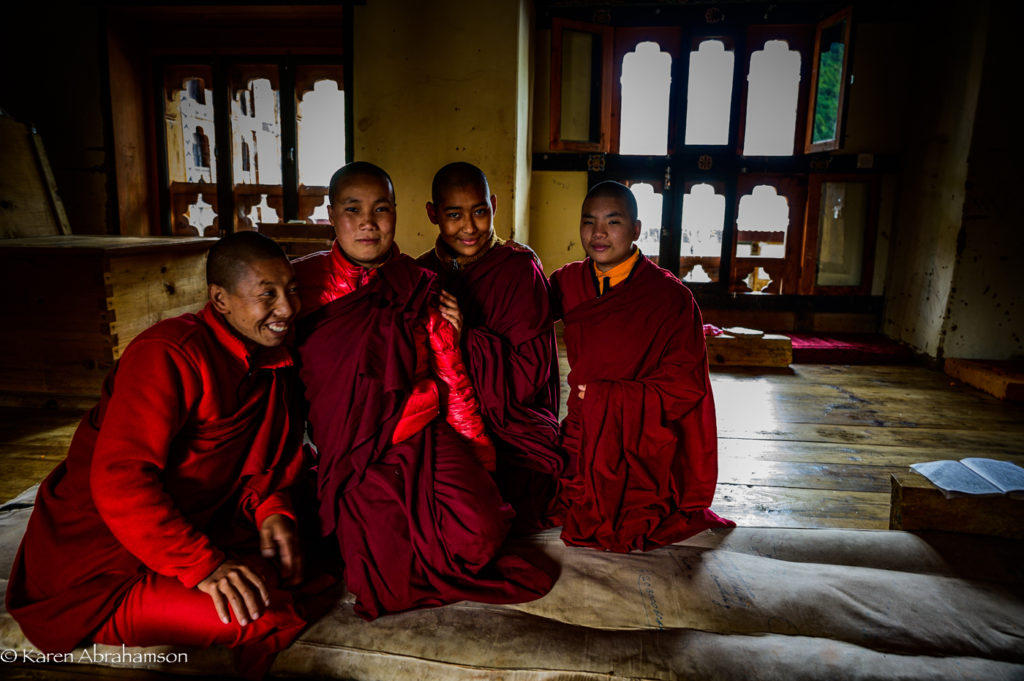
Maybe it was the time we took, instead of just swiftly touring around and snapping photos like so often happens with tourists, but it was nice to see the monks and nuns wave back when it was time for us to go.
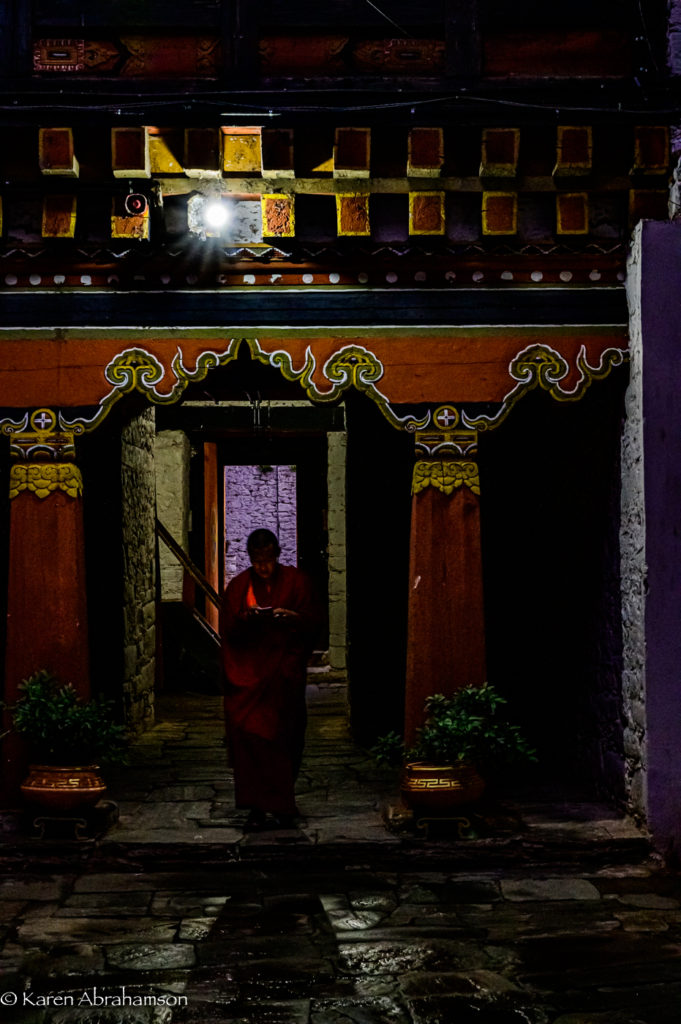
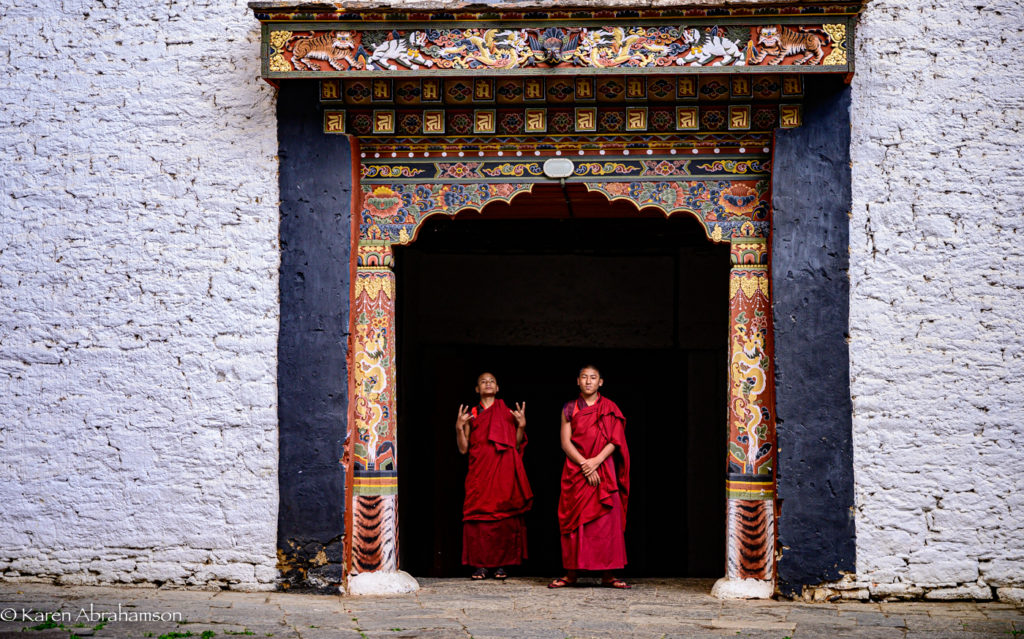
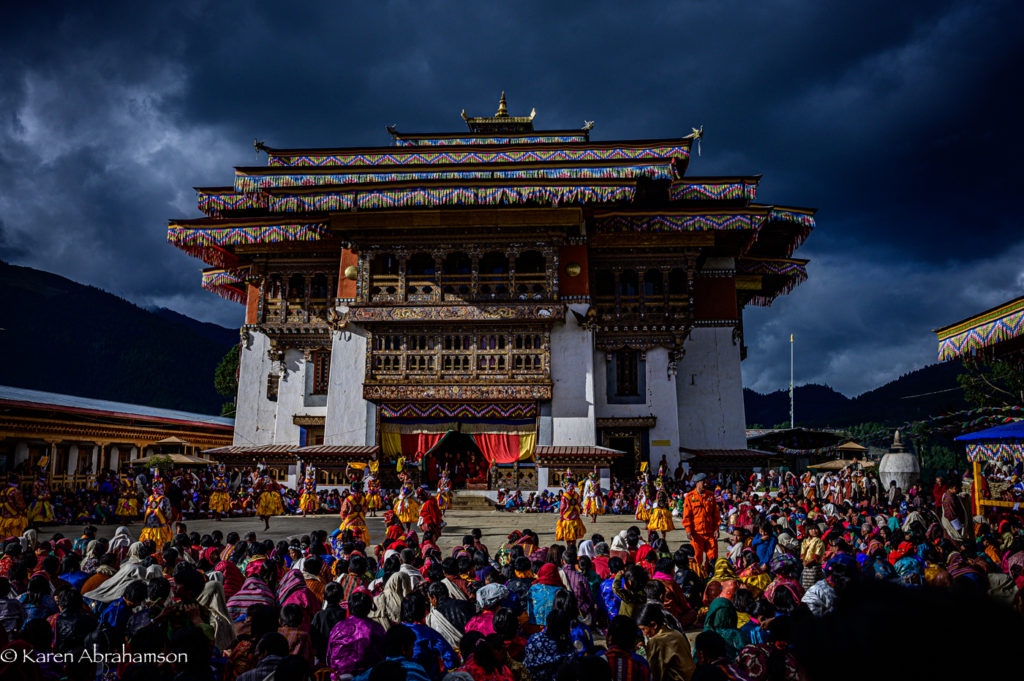
I’ve been to festivals here in North America and elsewhere in the world. I’ve stumbled through religious and nonreligious festivities in Peru, Myanmar, Bali, Portugal and elsewhere in Europe as well as here in North America. All were colorful and all had excitement—the pageantry of a Jesus effigy led through the streets; the golden offerings of Bali; the color of Canada Day; or the raucous parties of the Fourth of July of my American friends. Not to mention the fireworks.
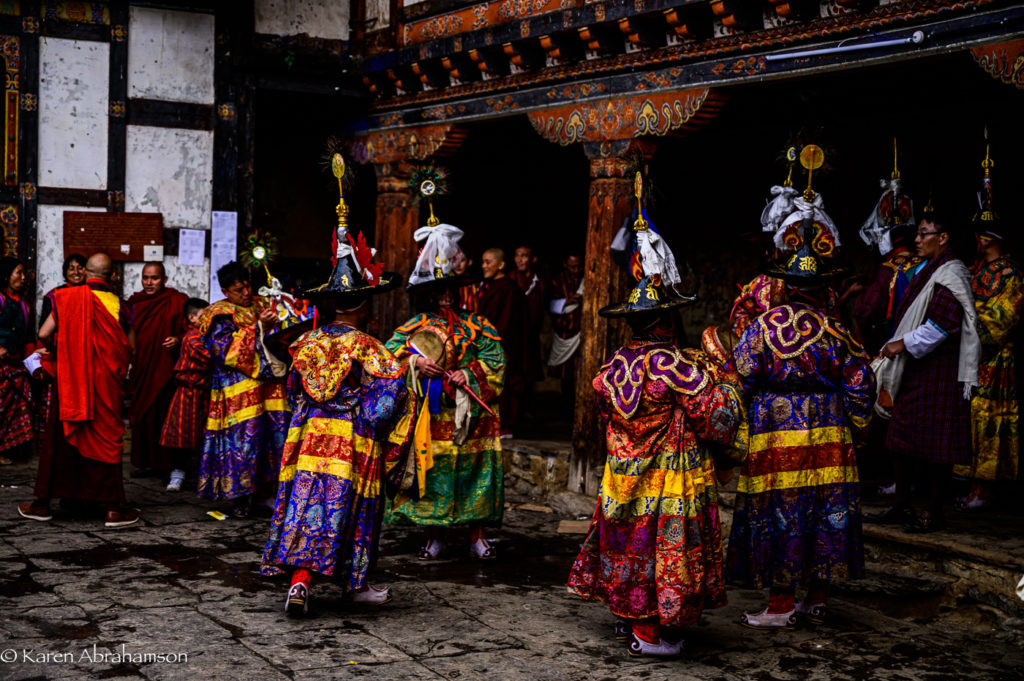
None of them have anything on Bhutanese Buddhist Monastic Festivals and I didn’t even attend the country’s biggest festivals in Thimpu or Paro, but these were the biggest, brightest, friendliest, boldest events I’ve ever been to. Think something like a major PRIDE parade on steroids.
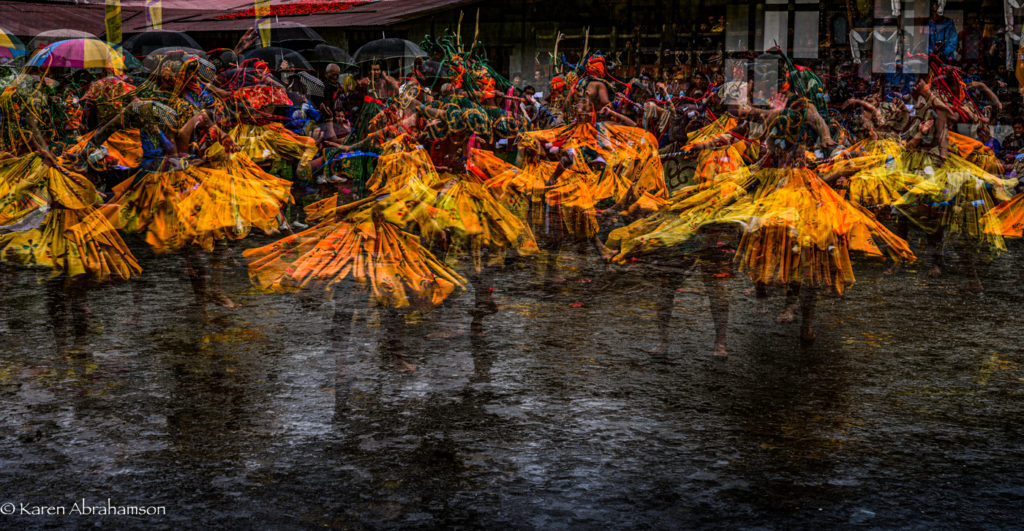
Don’t get me wrong—there aren’t skimpily clad people running around –the Bhutanese are always chastely attired in their traditional Gho and Kira. But, well, there are plenty of phalluses. You see, because of its association with a Lama, the phallus is protective symbol in Bhutan and so you see them everywhere. Carved ones hang off the corners of homes, painted phallus adorn exterior building walls and more carved ones are set prominently above shop doors and windows. So, if you are shy of the human male member, don’t go to Bhutan. You’ll kill yourself blushing.
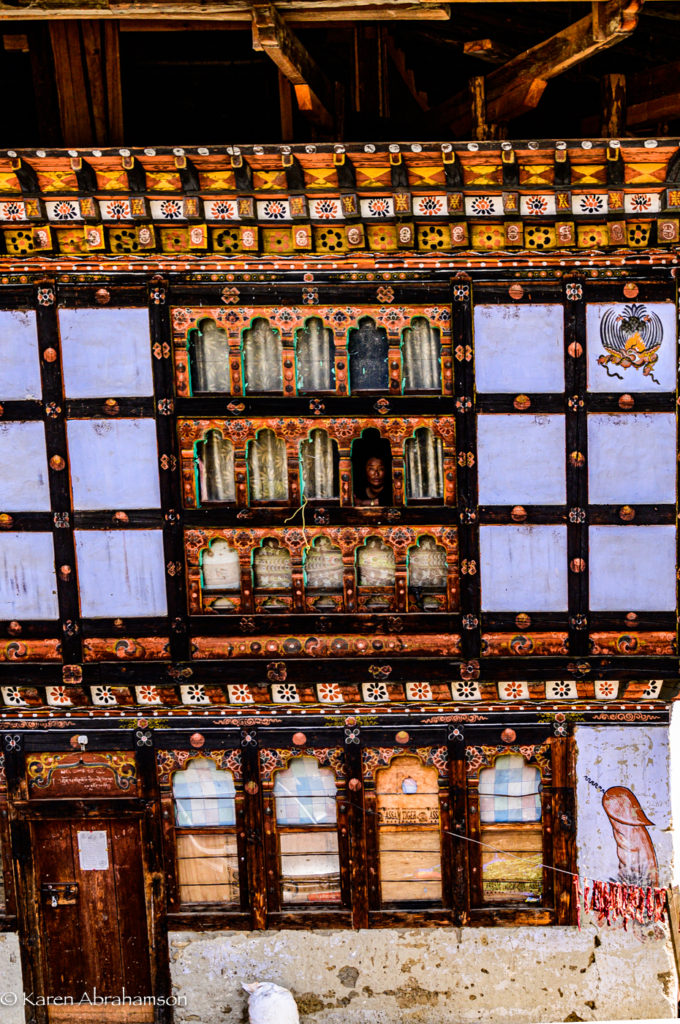
The phallus is also plenty visible at monastery festivals. Monk dancers spin around the open courtyards of these huge white strongholds, but around their edges, taunting and teasing the crowds are the ‘clowns’ (actually the most senior and best of dancers) carrying phalluses and teasing the crowds. Women and children giggle and hurry away. Men joke with these supreme joksters. At one point, one of my photographer companions was down on one knee taking a series of panning shots with his camera. The next thing he knew, he had a clown beside him, using the phallus to point as his camera, mimicking my friend’s actions. The clown got his reaction and my friend could only laugh in response.
Beyond phalluses, the Bhutanese were wonderful at welcoming a motley group of photographers into their midst. Monks and local villagers usually agreed to a photo and would pose for us. At one festival we were even allowed to enter the antechamber where monks prepared for their dances and to photograph the intense preparations they went through.
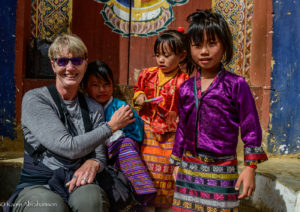
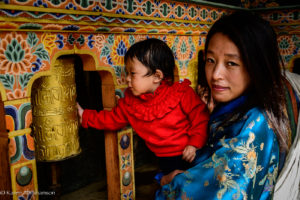
Best of all, though, were the lovely people who had come on pilgrimage to the festival and invited me to join them on their mats where they shared tea and roasted rice. Lovely and very tasty and they even tried to explain the characters of the various dances. It reminded me of other places and times and of the camaraderie of being seated on the earth and enjoying the company of the kind people you meet at festivals of this kind. It’s a chance to breathe in the spirit of a place.
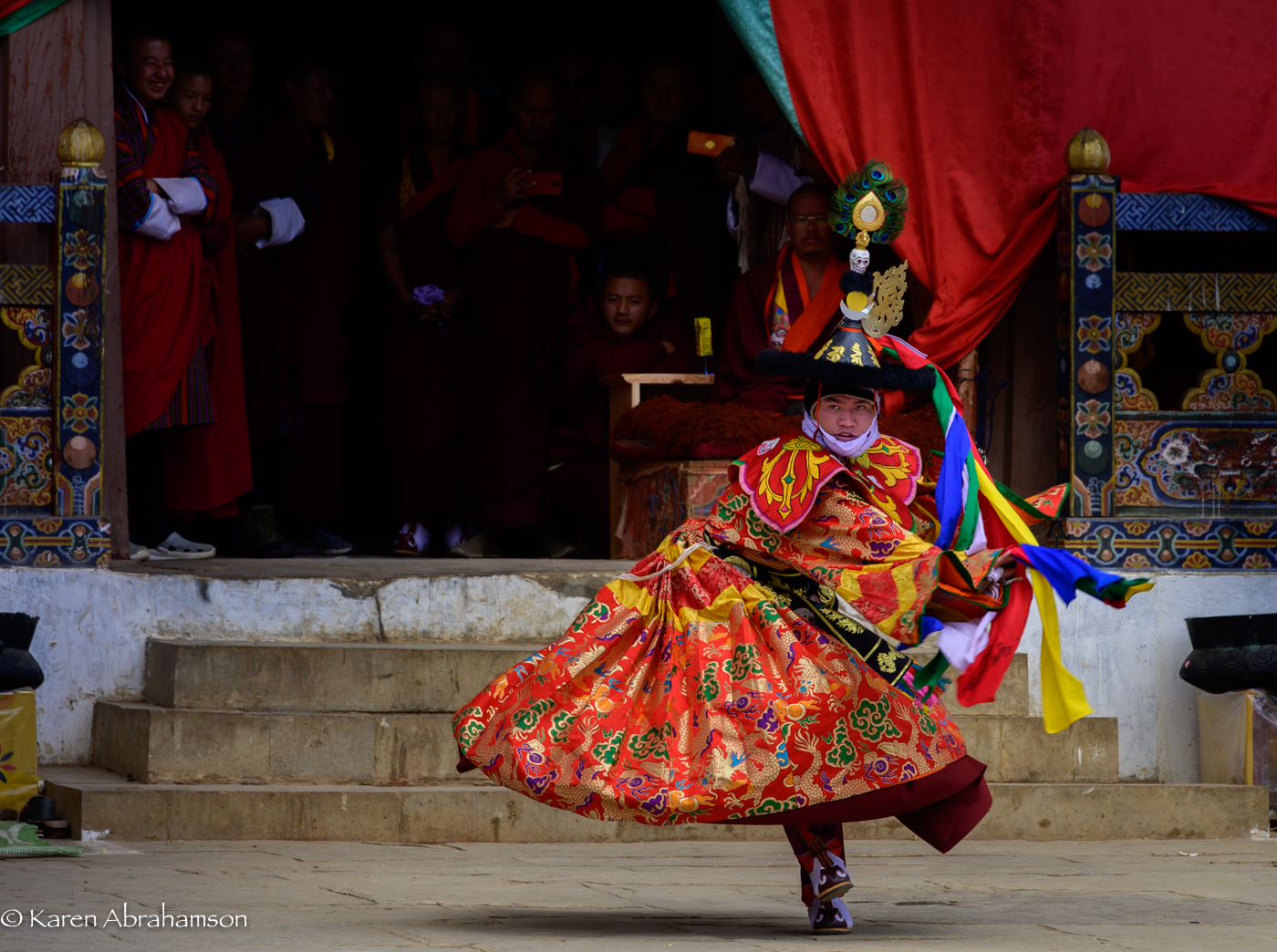
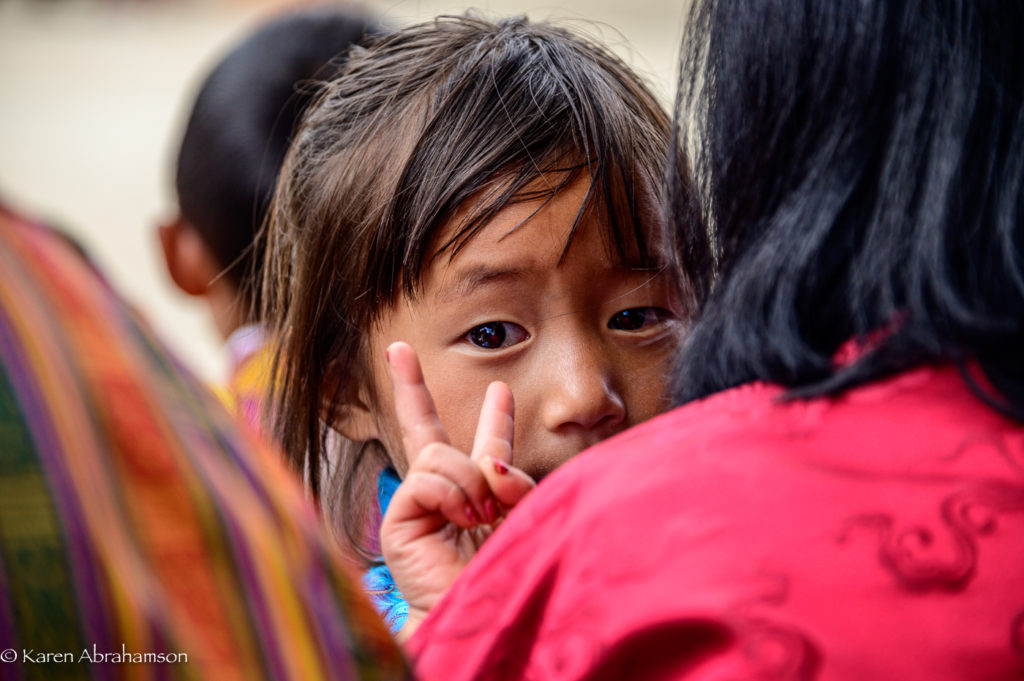
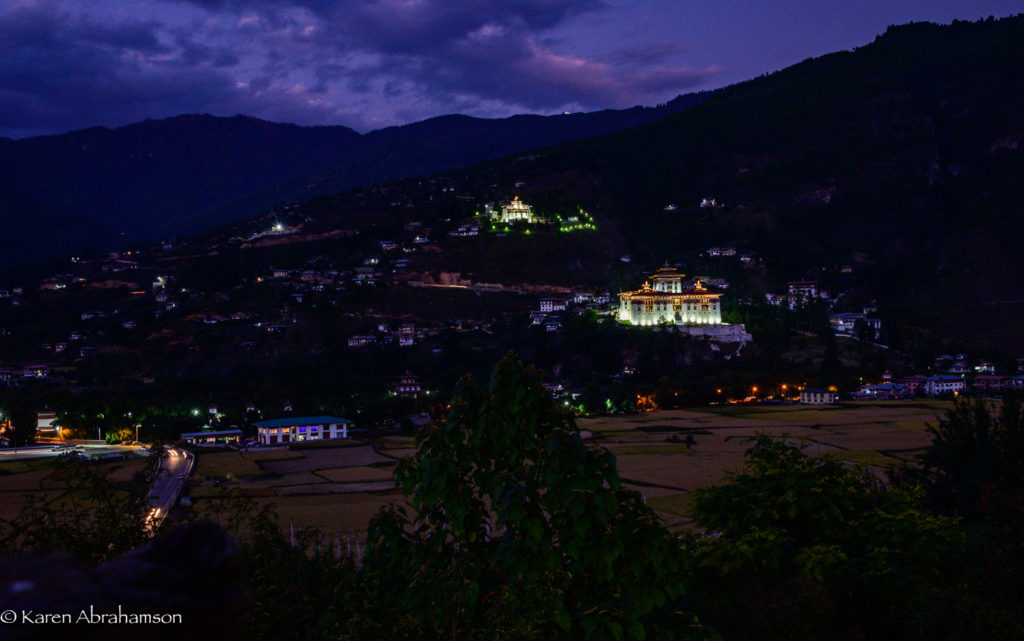
Since returning home and while suffering from jet lag I’ve had a number of people ask me where I was travelling. When I answer “Bhutan” I’ve had a lot of blank stares, so just to clarify, Bhutan is a small Himalayan country pressed, geographically, between Tibetan China and India. In fact, both larger countries have, in the past, taken over parts of Bhutan, with the most recent encroachment being the Chinese moving into and claiming Bhutanese highlands. The Chinese were presumably driven by the need to claim more of the very rare and very valuable Bhutanese cordyceps—a fungus that grows out of a high-altitude caterpillar’s forehead that “purportedly has medicinal powers matched only by rhino horns, elephant tusks and tiger penises” (according to my Lonely Planet guide.)
So, Bhutan whose symbol is the thunder dragon and which enjoys a Tibetan style culture that is purely its own, sits partially in very high mountains and partially in lovely valley floors. The lowest of those valleys is apparently still higher than some of the lowest elevation cities in Peru—the last country that I visited where altitude was involved. Given how altitude sickness struck me in Peru (I couldn’t take the preventative drugs because I was technically allergic to it), I was more than a little paranoid about visiting Bhutan. The skull-shattering headaches I had in Peru made me think I might understand how the caterpillar felt when being attacked by the head fungus. So, in preparation for Bhutan, I decided to go through my own ordeal before I left on the trip. I decided to get tested to see if I really was allergic.
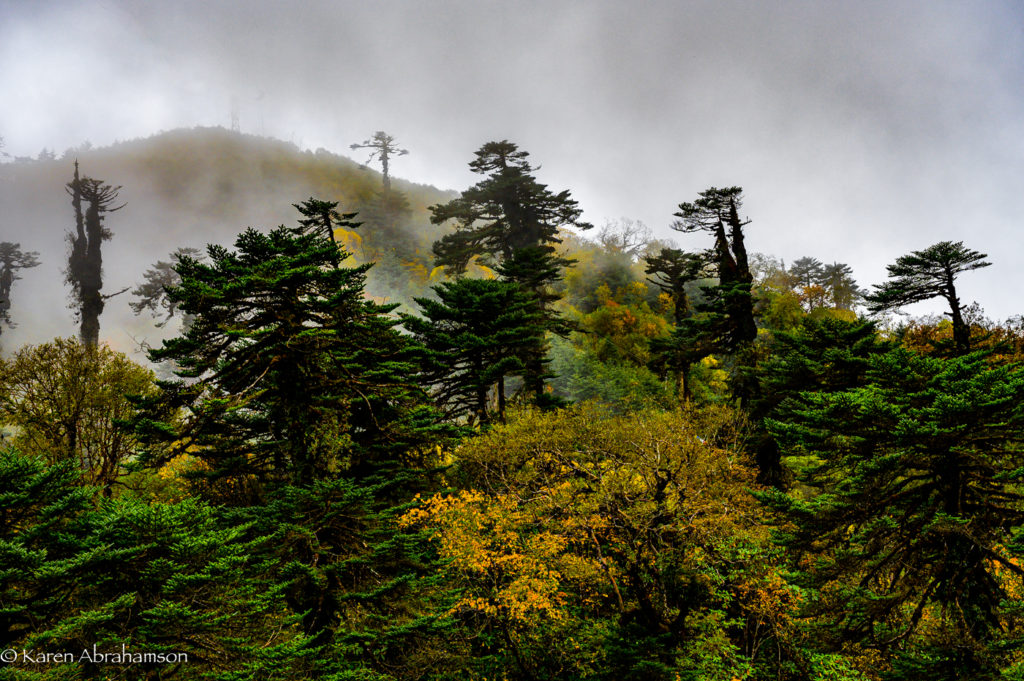
The altitude sickness drug is called Diamox and it is a sulfa-based drug, to which I am allergic (according to doctors that I saw when I was sixteen years old). In the interest of seeing whether my body chemistry had changed, my current family doctor referred me to an allergist—a referral that took three months before I had an appointment, putting me only one month from my Bhutanese departure date. I arrived at the appointment and the allergist took my blood pressure, checked my heart etc., told me that I was healthy (which I knew) and then advised that there were NO tests for sulfa allergies, but if I’d like to go into the hospital for three days they could possibly test me for Penicillin allergies. (I mean what the****?) He suggested that I not take the Diamox but, as an afterthought, suggested that I might want to call the local travel clinic for a second opinion.
Given my experience in Peru and my determination to go to Bhutan, that was exactly what I did. I spoke to the travel doctor who listened to my issue. She told me to take the Diamox—there was, apparently, no cross-reactivity (whatever that means). So I did that, too.

In Bhutan I travelled over passes that were 3,900 meters high and spent days at 3,300 meters—considerably higher than where I became sick in Peru (though at 3,300 meters I had frequent headaches even with the Diamox), but it was worth it. I even climbed a mountain to the Tiger’s Nest monastery at an altitude of about 3,000 meters and am here to tell the tale.
So the perilous Bhutanese landscape was really simply the magical landscape of the thunder dragon, Himalayan mountain peaks, picturesque plateaus and river valley’s so deep they looked bottomless. Everywhere there were towering cypress trees on the heights and rhododendron trees lower down. Rice fields heavy and ready to harvest lay along the valley bottoms and on stepped paddies up the valley sides. Dotting this landscape were the small towns and cities and the huge white-walled monastic fortresses called dzongs.
Most memorable of all were the beams of God-light shining through the clouds to spotlight white-washed temples or green fields. It was—supernatural, superlative, spectacular, breathtaking. And I was able to enjoy it all, thanks to the Diamox.
I pity the poor caterpillar who can’t enjoy the rarified heights where it lives.
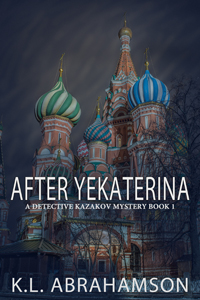 Click Here to get your free copy of AFTER YEKATERINA
Click Here to get your free copy of AFTER YEKATERINA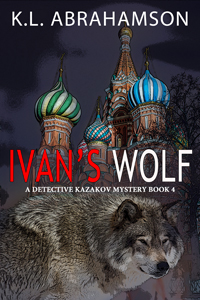
In celebration of the publication of Ivan’s Wolf, book four in the Detektiv Kazakov Mysteries, the ebook of After Yekaterina, book one of the series, is now free at all major online retailers. Click HERE for the link to all major on line retailers.
The Detektiv Kazakov Mystery Series
Set in an alternate history Russia, the series is introduces Detektiv Alexander Kazakov, a loner detective committed to finding the truth for the dead and murdered. The series takes place in a world where Catherine the Great’s conquest of the Crimea woke the slumbering Ottoman Empire and brought the great Khans down upon Moscow. Two hundred years later the remains of the Russian population dream of Russia’s past glories, while their new country of Fergana lays like the gristle in a joint between the rumblings of the Ottoman and Chinese Empires. The death of a young Russian girl sets Kazakov on a series of investigations that have implications for the entire world.
Other books in the series: